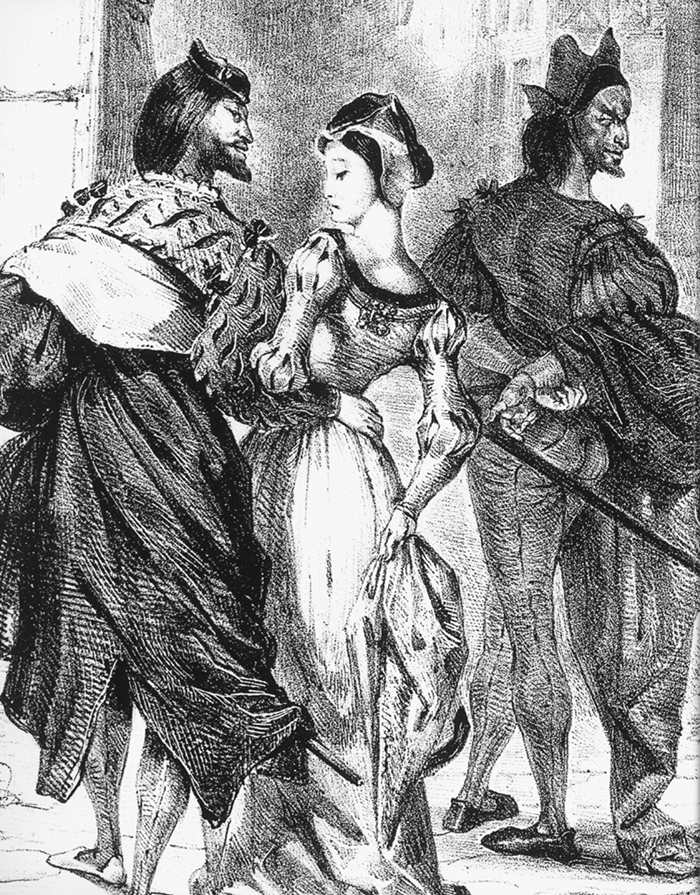
http://www.tate.org.uk/britain/exhibitions/gothicnightmares/rooms/room5_works.htm
John British Dixon after John Hamilton Mortimer
An Incantation 20 July 1773
Mezzotint 610 x 486 mm
Untitled 2009
Courtesy Hotel © the artist
Screenprint on linen
62x44cm

The Bewitched Man
c. 1798
Oil on canvas, 42,5 x 30,8 cm

DELACROIX, Eugène
Faust Trying to Seduce Margarete (detail)
1828
Lithograph

BALDUNG GRIEN, Hans
Witches Sabbath
1510
Woodcut with tone block, 379 x 260 mm
Love Magic
-
Oil on panel, 24 x 18 cm


A Trip to the Moon (Le Voyage dans la lune)
Georges Méliès (French, 1861-1938)
1902. 35mm film, black and white, silent, 11 minutes (approx.)
F54
The Museum of Modern Art, MoMA Highlights, New York: The Museum of Modern Art, revised 2004, originally published 1999, p. 49
A Trip to the Moon is a satire in which the innate conservatism of the scientific community is overcome by the convictions of a lone charismatic figure (played by the filmmaker himself). This one-reel film spared no effect or expense in bringing to life Méliès's intensely personal vision. Astronauts prepare for a rocket-launching, take off, land on the moon (hitting it in the eye), and finally splash down back on earth.
Perhaps the greatest tribute paid to Méliès by his peers was the fact that, rather than attempting to duplicate the marvels contained in A Trip to the Moon, they simply stole it and released it under their own names, particularly in the United States. Méliès produced hundreds of films over the next decade. He had been a renowned magician and showman, who first became fascinated with projected images when he incorporated magic lanterns (early slide projectors) into his stage presentations at the Théâtre Robert-Houdin in Paris. Inspired by the work of the Lumière brothers, Méliès went on to build Europe's first true film studio, at Montreuil, and began to make films indoors in a stagelike space with artificial lighting. He produced action shorts, fictional tales, and spectacles; but he was most successful with his fantasy works, the most famous of which is A Trip to the Moon.
-----------------------------------------------------------------------
The woman crawling through the tawny grass was the artist's neighbor in Maine, who, crippled by polio, "was limited physically but by no means spiritually." Wyeth further explained, "The challenge to me was to do justice to her extraordinary conquest of a life which most people would consider hopeless." He recorded the arid landscape, rural house, and shacks with great detail, painting minute blades of grass, individual strands of hair, and nuances of light and shadow. In this style of painting, known as magic realism, everyday scenes are imbued with poetic mystery.

Christina's World
Andrew Wyeth (American, 1917-2009)
1948. Tempera on gessoed panel, 32 1/4 x 47 3/4" (81.9 x 121.3 cm). Purchase 16.1949

Landscape
Cadavre Exquis (French) with Valentine Hugo (French, 1890-1968), André Breton (French, 1896-1966), Tristan Tzara (French, born Romania. 1896-1963) and Greta Knutson (Swedish, 1899-1983)

Acéphal Magical
Jamie Isenstein (American, born 1975)
2007. Two-channel video (color, sound), 4:52 min. Fund for the Twenty-First Century. © 2010 Jamie Isenstein
253.2008.a-b

Demonstrative Identification with the Universe = Magic Subjectivism
Bernhard Blume (German, born 1937)
1971. Gelatin silver print, 23 13/16 x 19 7/8" (60.5 x 50.5 cm). The Family of Man Fund
509.1992


